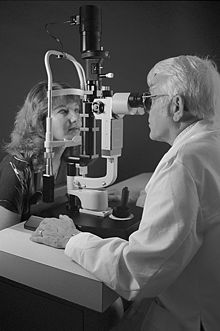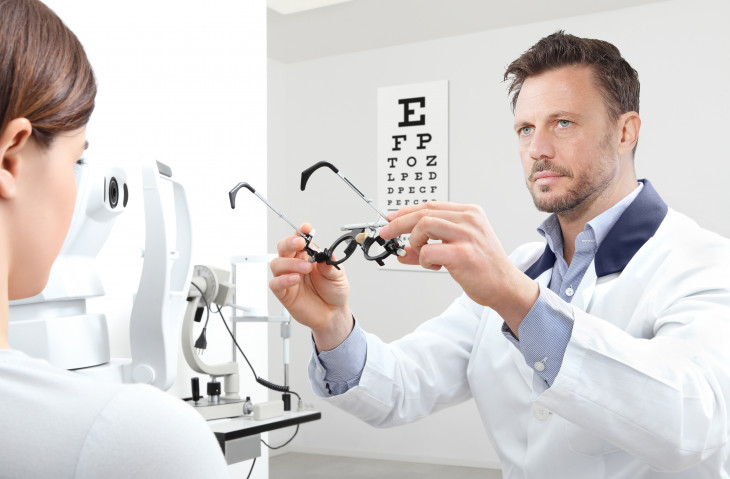The Value of Regular Examinations with an Eye Doctor Optometrist
The Value of Regular Examinations with an Eye Doctor Optometrist
Blog Article
Discovering the Most Current Technical Improvements in Optometry and What They Mean for Eye Doctors
In the ever-evolving area of optometry, current technological developments are improving how professionals come close to eye treatment. From the precision of Optical Coherence Tomography to the nuanced insights supplied by AI-driven analysis devices, these advancements are establishing new criteria in individual evaluation and therapy. Teleoptometry is positioned to redefine accessibility, guaranteeing that expertise goes beyond geographical limitations. As these developments permeate the technique, optometrists are confronted with the challenge of embracing these devices to improve patient end results. Yet, the question remains: exactly how will these technical changes redefine the duties and responsibilities within the profession?
Innovations in Diagnostic Tools
Advancing the field of optometry, advancements in analysis tools have revolutionized the way eye care professionals evaluate and diagnose visual impairments and ocular conditions. The previous years has experienced considerable technological developments, making it possible for even more extensive and exact evaluations. Optical Comprehensibility Tomography (OCT), as an example, supplies high-resolution cross-sectional photos of the retina, permitting for the early detection of diseases such as glaucoma and age-related macular deterioration. This non-invasive imaging technique has actually ended up being vital in contemporary optometric method.
One more key technology is the introduction of innovative corneal topography systems, which map the surface curvature of the cornea with precision. These devices are particularly beneficial for suitable get in touch with lenses and detecting corneal disorders. In addition, electronic retinal imaging has transformed standard ophthalmoscopy, supplying in-depth, scenic sights of the retina that promote extensive visual examinations.
The growth of wavefront aberrometry has actually likewise been critical, allowing the evaluation of refractive mistakes with unrivaled accuracy (Optometrist Chino). This technology helps in personalizing corrective lenses and improving medical results for refractive surgical treatments. Jointly, these analysis improvements equip eye doctors to provide remarkable individual treatment, guaranteeing very early intervention and customized treatment methods, ultimately enhancing visual health and wellness outcomes
AI in Person Monitoring
Structure on the structure of innovative diagnostic devices, the incorporation of artificial intelligence (AI) in client management stands for a transformative jump for optometry. AI systems are significantly used to improve effectiveness, precision, and personalization in individual care. By analyzing huge quantities of information, AI can determine patterns and anticipate possible ocular problems, enabling optometrists to tailor interventions extra properly. This capacity is critical in taking care of chronic eye illness such as glaucoma and diabetic retinopathy, where very early detection and continual tracking are crucial.
Moreover, AI-driven systems facilitate streamlined client interactions and administrative procedures. Automated organizing, online examinations, and individualized follow-up strategies not just boost person satisfaction however also enhance time management for experts. These systems can triage people based upon the seriousness of their conditions, making certain that those in important need receive timely focus.
Moreover, AI improves decision-making by providing optometrists with evidence-based recommendations and treatment paths. By incorporating data from digital health and wellness records, AI tools provide insights that educate professional choices, reducing the danger of her response mistakes and boosting patient outcomes. As AI proceeds to evolve, its duty in patient administration will likely increase, improving the landscape of optometric treatment.
Advancements in Retinal Imaging
In the realm of optometry, retinal imaging has experienced amazing technical advancements that are improving analysis abilities and individual treatment. Developments such as Optical Comprehensibility Tomography (OCT) and fundus photography have actually transformed exactly how optometrists evaluate the retina and imagine.
Enhanced imaging techniques like OCT angiography are additional refining analysis accuracy. Opticore Optometry. Such innovations facilitate the recognition of minute retinal adjustments that could symbolize illness development.
Additionally, innovations in expert system are augmenting retinal imaging by allowing automatic analysis of large datasets. These systems assist optometrists in determining patterns a measure of pathology, consequently improving diagnostic precision and performance. Jointly, these technologies are changing retinal imaging right into a foundation of contemporary eye treatment, boosting results and broadening restorative possibilities.
Teleoptometry's Growing Role
Teleoptometry is increasingly ending up being an important part of eye treatment, driven by developments in digital communication and analysis tools. This is specifically valuable in country and underserved locations where access to specialized eye treatment is often minimal.
The integration of expert system (AI) additional enhances teleoptometry, enabling the evaluation of aesthetic data and helping in the detection of eye problems such as glaucoma and diabetic person retinopathy. AI-powered algorithms can swiftly analyze intricate imaging data, offering eye doctors with beneficial understandings that strengthen scientific decision-making.
Additionally, teleoptometry sustains continuity of care via smooth assimilation with digital health and wellness records (EHRs), enabling optometrists to maintain thorough patient histories. When consulting with different professionals., this makes sure that individuals receive individualized and regular treatment even.
Regardless of these benefits, challenges continue to be, including guaranteeing information safety and security and managing person assumptions. Nonetheless, teleoptometry represents a considerable stride towards even more accessible, effective, and patient-centered eye care. As modern technology evolves, my latest blog post its duty is poised to increase better.

Future Patterns in Eye Care
A myriad of cutting-edge fads is readied to improve the future of eye treatment, driven by technical advancements and the advancing demands of people. One substantial fad is the combination of expert system (AI) in diagnostics, which promises to improve the accuracy and effectiveness of eye assessments. AI formulas can evaluate substantial quantities of data from retinal pictures, possibly identifying problems like diabetic retinopathy and glaucoma earlier than typical techniques.
Additionally, customized medication is getting traction in optometry, with genetic screening notifying customized treatment plans. This strategy intends to maximize individual outcomes by customizing treatments to specific hereditary accounts. Wearable innovation, such as smart get in touch with lenses, is additionally imminent, using real-time surveillance of intraocular stress or glucose degrees, hence providing constant understandings into systemic and ocular health and wellness.
The fostering of increased reality (AR) and digital truth (VR) in training and client education and learning is one more arising pattern. These innovations provide immersive experiences that can enhance understanding and skills both for people and optometrists. As these patterns develop, eye doctors must stay abreast of technical advancements to provide advanced treatment, guaranteeing enhanced client end results and complete satisfaction in the dynamic landscape of eye care.
Conclusion

Jointly, these diagnostic advancements equip eye doctors to deliver exceptional patient treatment, making certain very early intervention and customized treatment techniques, inevitably enhancing visual wellness end results.

As these innovations proceed to evolve, eye doctors need to adapt and incorporate them into method, ultimately optimizing process effectiveness and elevating the standard of eye care supplied to patients.
Report this page